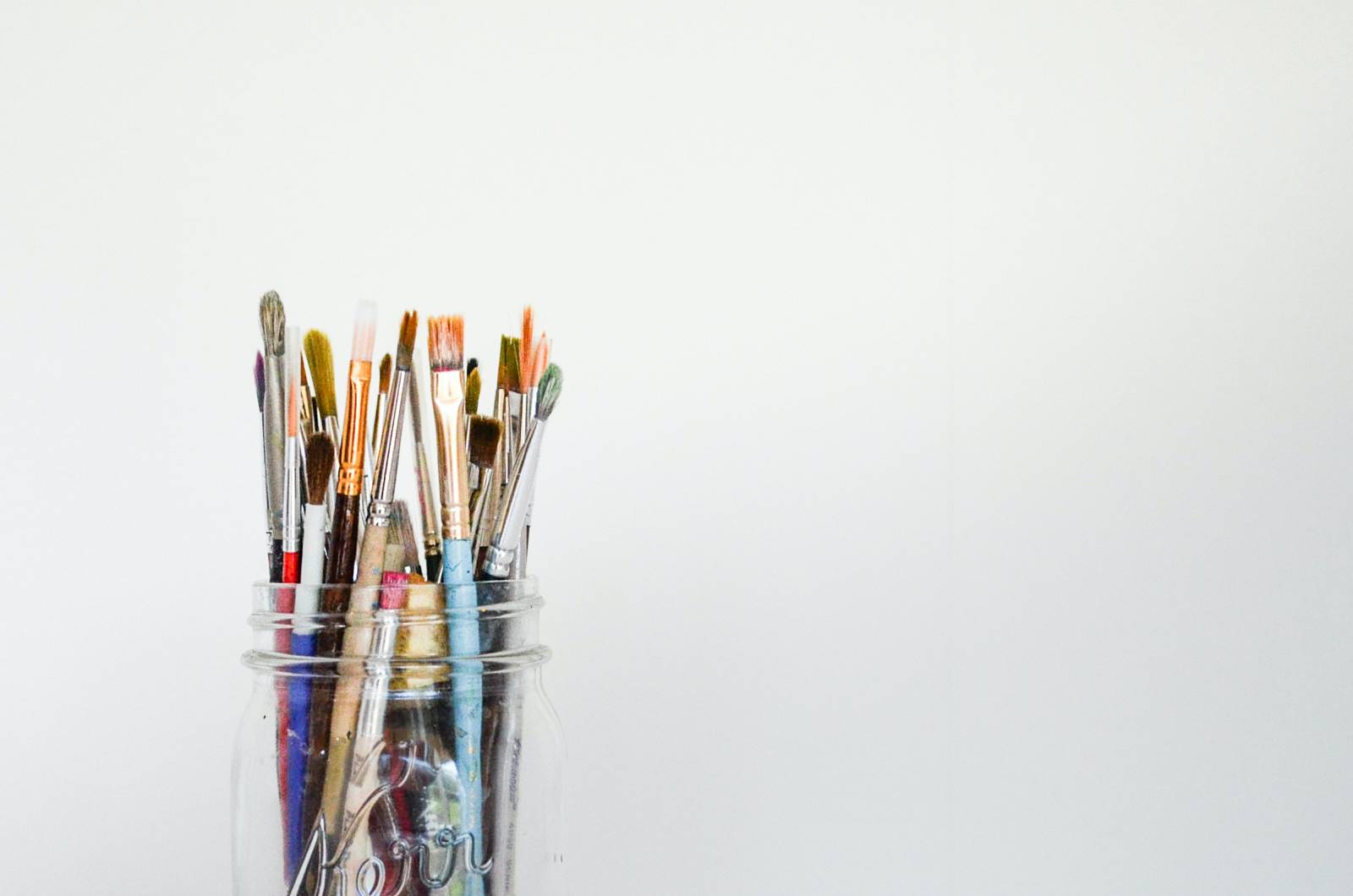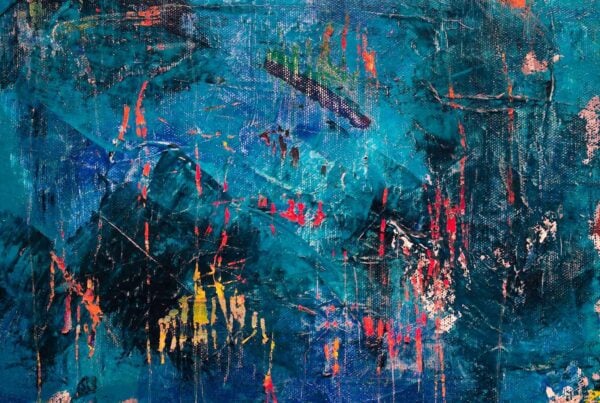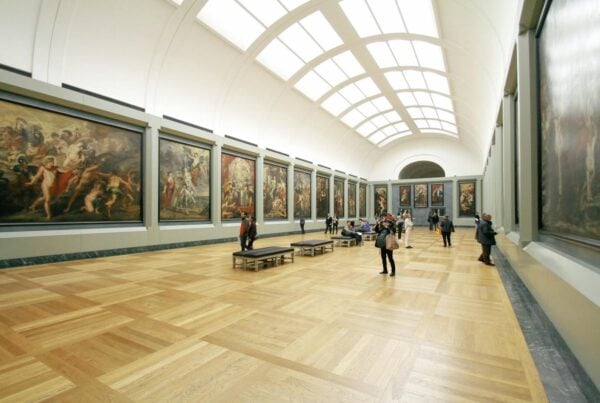Article commissioned by Hickman Design, Author – Dunja Karanovic / Aistė Jakonytė
You have to systematically create confusion, it sets creativity free. Everything that is contradictory creates life. – Salvador Dali
We have all experienced an episode of creative block at some point, and it can be very frustrating especially when you are working on a deadline. While printmaking has its own phases in terms of the artistic process (you can’t avoid getting your hands dirty!), like all forms of art it requires us to get into that special creative flow. Based on the practices and suggestions of great artists and designers, we have put together this list of tips for overcoming creative block. This article was written with input from Aistė Jakonytė a UK based contemporary painter.
Table of Contents
1. Find inspiration in the process
Sometimes you might start off with a clear idea of what you want to create, but more often than not, the work “takes over” and develops in a different direction, despite our initial vision. If you’re experiencing creative block, it helps to not think about the end result and just enjoy working with materials and processes. Try mixing together some colours outside of your usual palette and making a few quick monotypes. Even if the final products are not what you wanted to achieve, the process might “teach” you something you might not have learnt in your usual controlled process.
If you’re a perfectionist and tend to feel anxious when faced with a new project, the printmaking process can be very liberating. Draw or paint over your trial prints to see how different things can add to your original sketch, or use them as a background for a new piece and skip through the fear of facing a white sheet of paper. Either way, it’s important to keep working as our artistic skills need practice to “stay in shape”, much like any other motor skills.
2. A good sketchbook is an investment
Carrying a sketchbook around is a good practice on many levels. Whether or not you use it to create detailed drawings or jot down ideas and quick sketches, your sketchbook is like an idea bank – you can think of it as a way to help out your future self. Have it with you as often as you can so if inspiration comes at an unusual time you are ready for it – you might overhear an interesting conversation, intriguing song lyrics or get inspired to draw a passer-by, a plant or an animal.
Don’t feel pressured to keep the pages neat or “artsy”, nobody needs to see your sketchbook if you don’t want them to – take notes, write down silly ideas, keep scraps and clippings inside, and most importantly – go back to them. Especially if you’re experiencing creative block, going back to your notes and old sketches can help give you ideas – you’d be surprised how creative you were just a few weeks/months before!
3. Make a habit of art
Make a habit of contributing to your practice on a regular basis, even if that means scheduling specific days of the week to draw/paint/sculpt/sketchbook etc. Being struck by inspiration is real but it doesn’t happen as often as you may think, forming habits is a more reliable way to progress and it gets the ‘bad’ ideas out first.
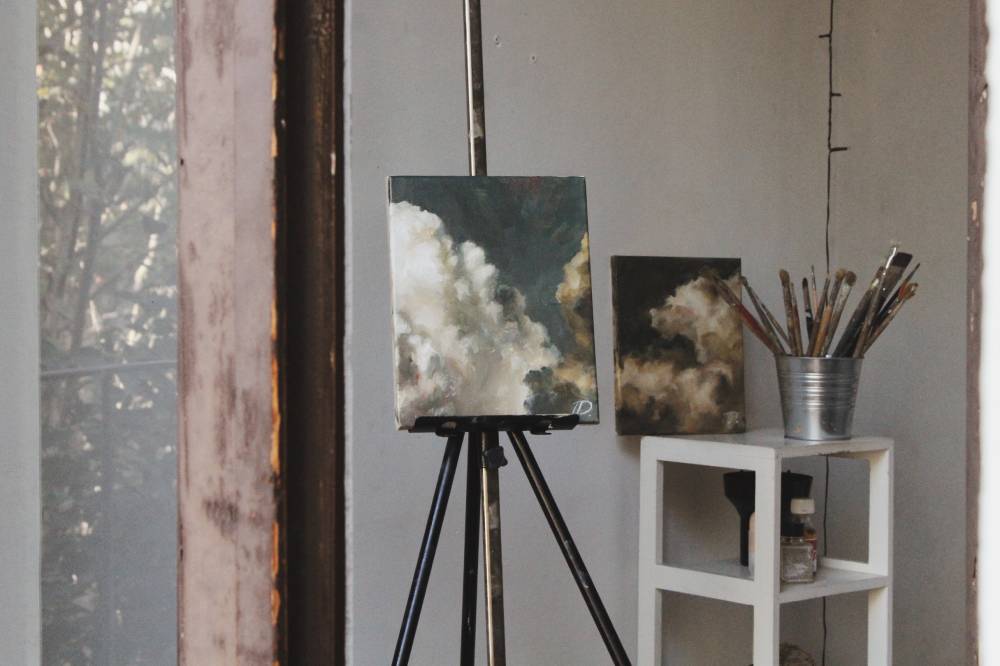
4. Change your surroundings
Our surroundings have a very strong influence on our mood and capacity to be creative. While there is no one rule which works for everyone (some artists prefer a clutter-free environment, while some like to be surrounded with different stimuli and sources of inspiration), it helps to change things up if you’re struggling to get into that creative flow. If you’ve been spending a lot of time in your studio, try going outside for a while. Turn off your electronic devices and have some quiet time in nature. If you tend to work alone a lot, perhaps a fun night out is what you need – meeting other people and spending time in a different environment can help us reset.
5. Go back to basics
Having all the art of the world at our disposal can sometimes put a lot of pressure on us to be productive and create new artworks all the time, but there is a lot of work behind the stuff people post online. Going back to basics and giving yourself tasks like you would in a foundation course can help boost creativity. Pick a simple subject from your surroundings – a face, an animal or an everyday object, and try drawing it in a different technique/style every day for a month.
Maybe you will hate cross-hatching but have a breakthrough with ink wash or oil pastels. Turn a few of the sketches into simple linocuts or screen prints and try out different colours for the prints. Simple observational drawing is the foundation of all forms of art and there is no shame in remembering that. Not everything you make has to be ground-breaking.
6. Look for inspiration in other forms of art
Taking the time to enjoy art that is outside of your area of expertise can be beneficial in many ways. On the one hand, getting immersed into a different realm can help you get out of your head and shift your focus. Listen to music, watch a film, read a work of fiction or give writing poetry a go. It will stimulate your brain in a way which is different from your personal practice.
On the other hand, you never know when a work of art will provide the answers to a problem. Most of the issues we face as artists are fairly universal, and you can bet others have faced them throughout history. Maybe you will find a concept for your next edition, or the solution to a sketch while watching a play or visiting a museum.
7. Go to exhibitions
Make a point to go see exhibitions/performances on a regular basis, even if you don’t like the artwork – sometimes seeing something you don’t like will at least give you ideas for what not to do/avoid in your practice.
8. Tidy up your studio
We usually connect tidying up with the idea of procrastination, but clearing some of the clutter from the studio provides a more stimulating environment and allows you to take a mental break while keeping your hands busy. Changing up the order of things or going through some old works and materials can be motivating. You might even find an old unfinished project and realize now is the time to go back to it. What if you tried using up all of your leftover materials instead of buying new ones? Try printing over old sketches or recycling them into new handmade paper!
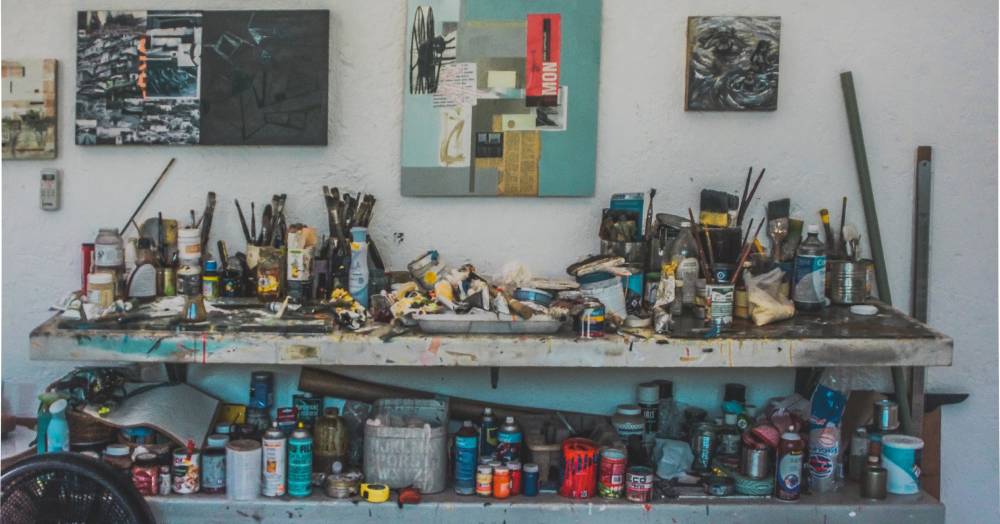
9. Organise your work space/environment
Be strategic with your work environment – ensure your tools are clean and organised and that you have all the materials you need before you begin to work. When you do find the time/get the idea for your next project you can just dig in, rather than have to clean/pop to the shops/wait for something to be delivered in order to proceed. Being in the space you work in and interacting with your tools may get the muscle memory going too and send a spark of inspiration. Also, it may not work for all, but the guilt of having unused art materials may get you working too for the sake of not wasting your money…
10. Tap into your subconscious
The surrealists have taught us a lot about what we can achieve by tapping into our subconscious minds. Did you know Salvador Dali kept a spoon in his hand while taking a nap so that it could wake him up when his mind reaches the dream state? Those few seconds right after waking up are a great time to jot down ideas – try keeping a dream journal on your bedside table, you’ll be surprised how much of your dreams you can remember after just a few days. Daydreaming and meditation can also be a good source of inspiration, and you can incorporate them into your drawing practice – why not make a series of automatic drawings?
11. Get a different perspective
Whether or not you like working in a team, getting a different perspective can sometimes really make a difference. Asking a fellow artist to look at your work, or simply talking to a friend about your current project can help you get some creative input. Brainstorm ideas with the people around you and don’t be afraid to have a fresh pair of eyes look at a piece, especially if you’ve been stuck on it for a while. Even if you don’t get a ready solution, talking to someone about what you are doing can often force you to see the weak points and underline the focus.
12. Look at old artwork
If you have kept your old artwork and don’t see yourself exhibiting or selling it, reuse it by either physically by painting over it/making a collage out of it etc or ‘re-do’ the idea/motif behind it. When lacking ideas or a subject matter it can be ‘easy’ to go back to your your art portfolio and look at have done before and either improve it by working over it or re-using the subject matter/composition etc. This can save time too, depending on what your practice is – don’t have to stretch and prime canvas for example, can just paint over it. It also helps when you just want to create and make something but don’t know what – you’ve done it already before, do it better!
13. Take a break
Last but not least, it’s important to remember that there’s more to life than productivity. It’s okay to not feel creative all the time, and to let your mind and body relax and recuperate. Whether you are in need of a break from your current project, or from a longer period of (over)working, a creative block might be a sign it’s time to slow down.
There is too much pressure nowadays to be constantly creating new things, and social media hasn’t helped much in terms of what’s considered a healthy pace. Overworking is not something that should be glorified, and the notion that the greatest art comes from emotional turmoil is a myth. Getting enough sleep and maintaining your physical and mental health is essential to a long-lasting and fruitful creative practice.
When it comes to the creative process, there is no single solution which works for everyone, and there are many more strategies you can try out when you feel like you are stuck. The general idea is this – repeating the same pattern can get boring and tiring, and boredom isn’t stimulating for anyone. If you are experiencing creative block, it helps to get out of your comfort zone and try something new. If it doesn’t work, don’t force it and take a break instead. Whatever social media makes it look like, no one is productive 24/7 and that’s okay. We do our best work when we are feeling well and rested!
Resources:
- https://www.brainpickings.org/2014/02/28/creative-block-krysa/
- https://artanddesigninspiration.com/what-turns-an-artist-on-a-glimpse-into-the-creative-process/
- https://theartling.com/en/artzine/10-artists-share-their-creative-process/
- https://brandfolder.com/blog/overcome-creative-blocks
- https://99designs.com/blog/creative-thinking/overcoming-creative-block/
- https://www.creativebloq.com/graphic-design-tips/20-expert-tips-to-beat-creative-block-123523
- https://www.bbc.com/news/magazine-10766308
- https://www.proko.com/lesson/meditation-for-artists-the-automatic-drawing-technique/discussions




